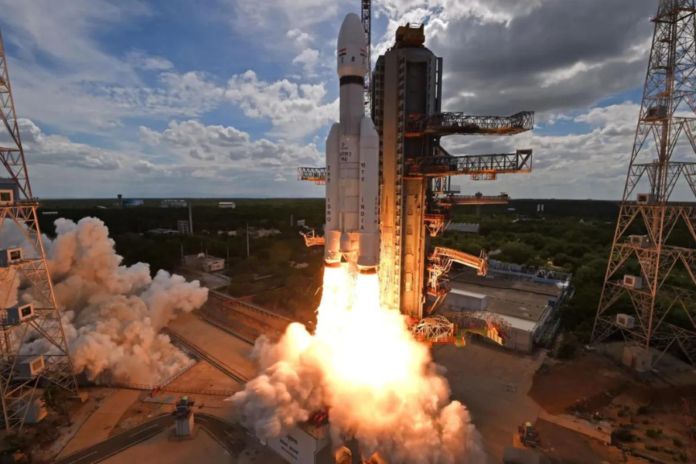Chandrayaan-3 Moon Mission: India hopes to win this week’s space race by being the first country to set foot on the moon’s south pole. The race is about science, politics of national pride, and a brand-new frontier: money.
On Wednesday, India’s Chandrayaan-3 is scheduled to touch down on the lunar south pole. Analysts and businesspeople anticipate a quick boost for the nation’s fledgling space industry if it is successful.
Before the lander plummeted from orbit and likely took with it the financing for a replacement mission, observers say, Russia’s Luna-25, which launched less than two weeks ago, had been on pace to arrive first.
The suddenly unexpected race to reach a previously undiscovered area of the moon brings to mind the space race between the Soviet Union and the United States in the 1960s.
But now that space travel is a lucrative industry, the moon’s south pole is prized for the water ice that scientists believe could one day support a lunar colony, mining operations, and eventually journeys to Mars.
Under the leadership of Prime Minister Narendra Modi, India has privatised space launches and is attempting to attract international investment as it aims to grow its market share in the launch industry five-fold over the course of the next ten years.
If Chandrayaan-3 is successful, analysts expect that India’s space sector will profit from its reputation for efficient engineering. The Indian Space Research Organisation (ISRO) only provided the project with roughly $74 million.
According to the inspector general of the US space agency, NASA is on schedule to spend almost $93 billion on its Artemis moon plan through 2025.
What next for Russia after Luna-25?
Russia was able to launch a moonshot despite sanctions from the West over its involvement in the Ukraine War and growing isolation. However, some authorities question its capacity to support a Luna-25 replacement. What Russia spent on the expedition is unknown.
A replication of Luna-25 is “extremely unlikely” given Russia’s budget priorities, he continued.
Prior to 2021, when it said it would collaborate with China on its moon plan, Russia had been considering a position in NASA’s Artemis programme. Little information about the attempt has been made public.
The year 2019 saw China’s first-ever soft landing on the moon’s far side, and the country has additional missions in the works. According to space research company Euroconsult, China will invest $12 billion in its space project in 2022.
NASA following India’s example
However, according to officials there, NASA has provided the blueprint that India is using by opening up to private funding.
For instance, SpaceX, run by Elon Musk, is creating the Starship rocket to carry NASA people to the moon’s surface as part of a $3 billion contract.
In addition to that contract, Musk has stated that SpaceX will invest about $2 billion in Starship this year.
By the end of the year, or in 2024, lunar landers being constructed by the American space companies Astrobotic and Intuitive Machines (LUNR.O) are anticipated to be sent to the moon’s south pole.
Additionally, privately funded alternatives to the International Space Station are being created by businesses like Axiom Space and Jeff Bezos’ Blue Origin. Axiom reported raising $350 million from Saudi and South Korean investors on Monday.
Space is still dangerous. India’s most recent moon mission failed in 2019, the same year an Israeli startup’s bid to make history by becoming the first privately funded moon mission also failed. This year, the Japanese company ispace (9348.T) attempted a botched landing.



